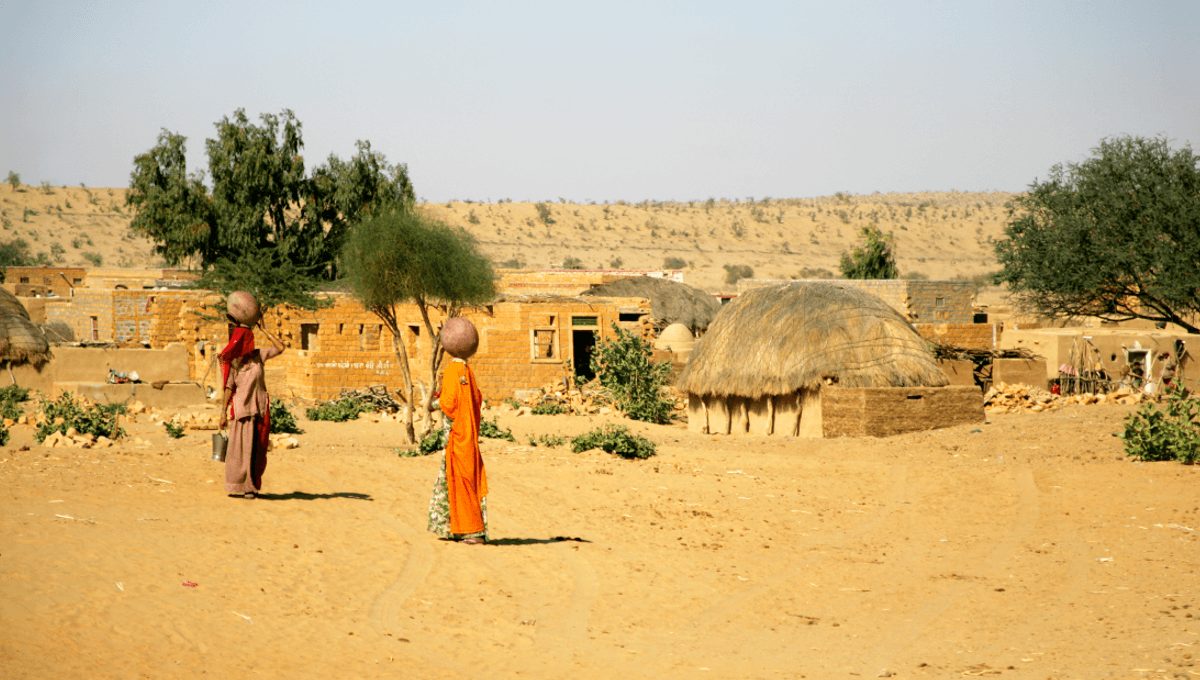-
Feed de notícias
- EXPLORAR
-
Páginas
-
Blogs
-
Fóruns
Thar Desert: A Biodiversity Hotspot That's Also The Most Densely Populated Desert In The World

Bustards, Caracals, And A Whole Lot Of People: What Lives In Thar Desert, The Most Densely Populated Desert In The World?
The sands of the Thar Desert stretch across over 200,000 square kilometers (77,000 square miles), covering parts of northwestern India and eastern Pakistan. Roughly the size of the United Kingdom, it’s only the world’s ninth-largest subtropical desert, but it claims a unique title: it's the most densely populated desert on Earth.
It’s estimated over 16 million people live in the Thar, spread across cities like Jodhpur and Bikaner, rural villages, and nomadic communities. With an average of over 80 people per square kilometer, its population density far exceeds most other arid landscapes. The Thar desert on a map. “The Thar Desert is a fascinating place,” said IFLScience’s Dr Alfredo Carpineti, who recently travelled to the region. “Cities such as Bikaner and Jodhpur, with their majestic forts, colorful houses, and stunning temples, stand out against the desert environment that surrounds them.” Temperatures in the Thar can reach an intense 41 °C (106 °F) in summer, while winters may dip near freezing. Annual rainfall ranges from just 100 to 500 millimeters, much of which quickly evaporates or seeps underground. Despite these extremes, the Thar is showing a surprising trend: it’s getting greener. “In a world where climate change threatens over 2 billion people in drylands, the Thar Desert in India defies expectations,” wrote the authors of a 2025 study that looked at decades’ worth of satellite data. “While many arid regions face worsening droughts, the Thar has become a hub of agricultural and urban growth over the past two decades. Between 2001 and 2023, satellite data show a striking rise in vegetation growth and urbanization.” White-footed fox in the Thar desert. Image credit: Tenacity_1987 / Shutterstock.com For a time, we didn’t know why this was, but the team discovered that a combination of shifting monsoon precipitation and groundwater pumping for agriculture seem to be the key drivers. The result has been a 38 percent increase in greening, alongside a 64 percent rise in rainfall, but whether this is something that can be sustained into the future is another question. “Rising temperatures and dwindling dry-season water supplies may threaten rapid urbanization and intensive agriculture,” wrote the authors. “Groundwater overuse and erratic rainfall could reverse gains, risking food security and livelihoods. Sustainable practices – efficient water management, drought-resistant crops, adaptation to rising heat stress, and renewable energy – must guide future development.” A caracal chomping a sandgrouse, both residents of the Thar desert. Image credit: Rich Lindie / Shutterstock.com Humans aren’t the only ones living it up in the Thar desert, where a rich diversity of animals can be found. Notable examples include the white-footed fox, striped hyena, and caracal (a wild cat with very fancy ears). It also boasts a lot of birds, including several bustards, the greater hoopoe-lark, and sandgrouse like those getting munched by the caracal in the image above. It seems as if life has so far fought against the odds in what’s thought to be one of the most inhospitable regions in the Indo-Pacific region, creating a juxtaposition of vibrancy and movement dotted across the vast sandy landscape. Making sure it remains as such is one of the many challenges we face up against the changing climate.How many people live in the Thar desert?

How hot is the Thar desert?

Why is the Thar desert getting greener?

Wildlife in the Thar desert


